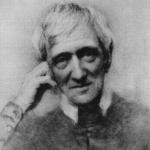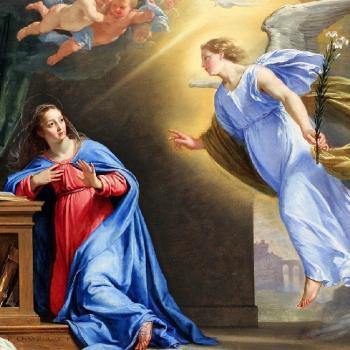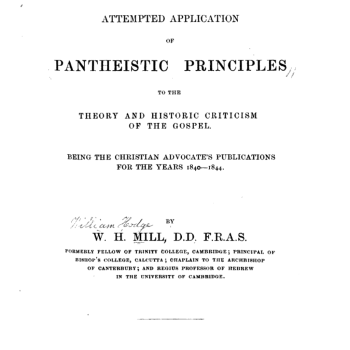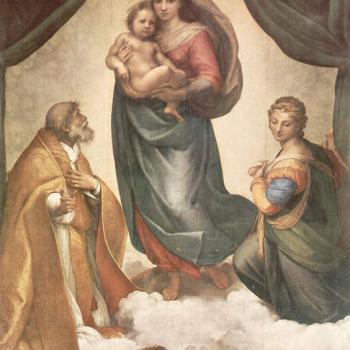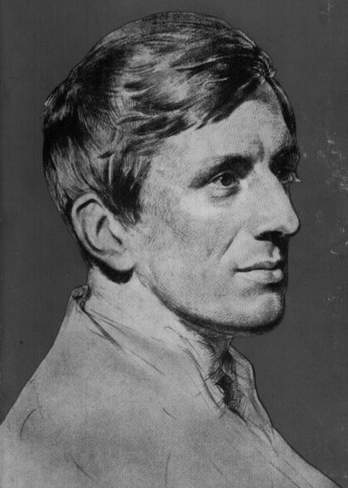
The following is a Foreword that my friend, Ryan Grant asked me to write for a new edition of the 1928 volume, The Mariology of Cardinal Newman, by Rev. Francis J. Friedel. [see purchase information]
*****
Blessed [soon-to-be-Saint] John Henry Cardinal Newman held to a very high Mariology even before he was received into the Catholic Church in 1845, at the age of 44, after a very distinguished career as an Anglican clergyman and Church historian. As was the case with G. K. Chesterton in his splendid book, Orthodoxy, written in 1908, fourteen years before he became a Catholic, so also Cardinal Newman was clearly Catholic in spirit in many ways before he was in a canonical sense. In a letter to Henry Wilberforce, dated 12 January 1848 he stated: “I have ever been under her shadow, if I may say it.”
Like Martin Luther, he had no problem accepting, for example, Mary’s Immaculate Conception (in the Catholic sense), or else something very similar to it, as early as 1832:
Who can estimate the holiness and perfection of her, who was chosen to be the Mother of Christ? If to him that hath, more is given, and holiness and Divine favour go together (and this we are expressly told), what must have been the transcendent purity of her, whom the Creator Spirit condescended to overshadow with His miraculous presence? What must have been her gifts, who was chosen to be the only near earthly relative of the Son of God, the only one whom He was bound by nature to revere and look up to; the one appointed to train and educate Him, to instruct Him day by day, as He grew in wisdom and in stature? This contemplation runs to a higher subject, did we dare follow it; for what, think you, was the sanctified state of that human nature, of which God formed His sinless Son; . . .? (Parochial and Plain Sermons, vol. ii, Sermon 12: “The Reverence Due to the Virgin Mary,” 25 March 1832; in his Apologia of 1864, he observed about this sermon: “I had a true devotion to the Blessed Virgin, in whose . . . Immaculate Purity I had in one of my earliest printed Sermons made much of.”)
In the same sermon he strongly implied that Our Lady ought to be venerated:
In her the destinies of the world were to be reversed, and the serpent’s head bruised. On her was bestowed the greatest honour ever put upon any individual of our fallen race. God was taking upon Him her flesh, and humbling Himself to be called her offspring; — such is the deep mystery!
He recognized, accordingly, that the Blessed Virgin Mary intercedes for us:
[I]f the Intercessions of the Saints have influence with Christ, surely it is not any extreme position to suppose that the greater Saints have greater influence – or that St Mary, as being our Lord’s Mother, is a greater Saint. (Letter to an Unknown Correspondent, 12 Jan. 1844)
His beliefs regarding Mary as the Mother of God (Theotokos) were firmly in place at the time of his Essay on the Development of Christian Doctrine: completed in 1845, right before he was received (therefore, entirely written while he was an Anglican). Four years later, he elaborated upon the dogma:
[T]he Mother of God has ever been the bulwark of our Lord’s divinity. And it is that which heretics have ever opposed, for it is the great witness that the doctrine of God being man is true.… The truth is, the doctrine of our Lady keeps us from a dreaming, unreal way. If no mother, no history, how did He come here, etc? He is from heaven. It startles us and makes us think what we say when we say Christ is God; not merely like God, inhabited by, sent by God, but really God; so really, that she is the mother of God because His mother. (Sermon Notes of John Henry Cardinal Newman: 1849-1878, “Maternity of Mary,” 14 October 1849)
In the same year he wrote very eloquently about Mary’s glorious Bodily Assumption:
It was surely fitting then, it was becoming, that she should be taken up into heaven and not lie in the grave till Christ’s second coming, who had passed a life of sanctity and of miracle such as hers.… Who can conceive, my brethren, that God should so repay the debt, which He condescended to owe to His Mother, for the elements of His human body, as to allow the flesh and blood from which it was taken to moulder in the grave?… Why should she share the curse of Adam, who had no share in his fall? “Dust thou art, and into dust thou shalt return,” was the sentence upon sin; she then, who was not a sinner, fitly never saw corruption. She died, then, as we hold, because even our Lord and Saviour died… by the grace of Christ which in her had anticipated sin, which had filled her with light, which had purified her flesh from all defilement, she was also saved from disease and malady, and all that weakens and decays the bodily frame. Original sin had not been found in her… If the Mother of Emmanuel ought to be the first of creatures in sanctity and in beauty; if it became her to be free from all sin from the very first, and from the moment she received her first grace to begin to merit more; and if such as was her beginning, such was her end, her conception immaculate and her death an assumption… (Discourses Addressed to Mixed Congregations, Discourse 18: “On the Fitness of the Glories of Mary”)
A little later he developed his existing views regarding Mary’s preeminent intercession, to a fuller doctrine of Mary Mediatrix. For example:
Our Lord died for those heathens who did not know Him; and His Mother intercedes for those Christians who do not know her; and she intercedes according to His will, and, when He wills to save a particular soul, she at once prays for it. I say, He wills indeed according to her prayer, but then she prays according to His will. Though then it is natural and prudent for those to have recourse to her, who from the Church’s teaching know her power, yet it cannot be said that devotion to her is a sine-quâ-non of salvation. (Certain Difficulties Felt by Anglicans in Catholic Teaching Considered, vol. ii, Letter to Pusey, ch. 5, 1865)
One could go on and on, immersed in these extraordinarily moving expressions of Cardinal Newman’s theology and spirituality regarding the Blessed Virgin Mary. I have sought to give readers just the “tip of the iceberg,” so to speak. In this spirit, I’m happy to enthusiastically recommend this new edition of a wonderful work, written by Rev. Francis J. Friedel in 1928: The Mariology of Cardinal Newman. I hope and pray that it is read far and wide, as we celebrate the long-awaited canonization of this extraordinarily influential Churchman: Cardinal Newman.
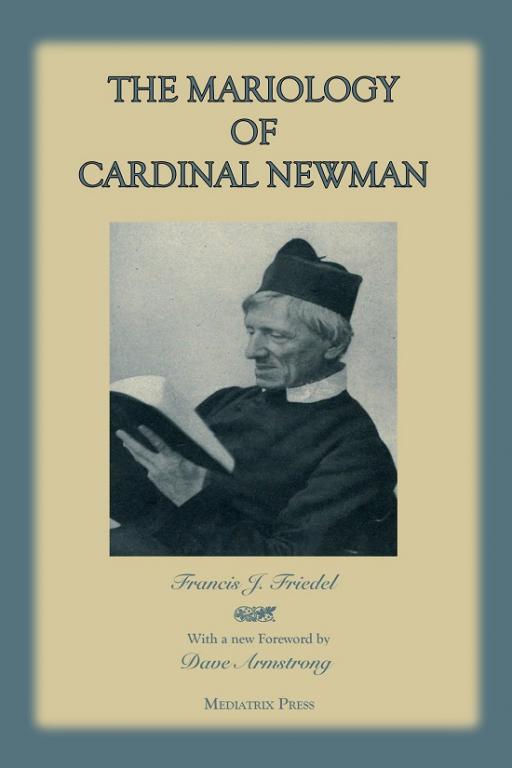
***
Photo credit: Portrait of John Henry Newman (1844) — slightly modified — by George Richmond (1809-1896) [public domain / Wikimedia Commons]



